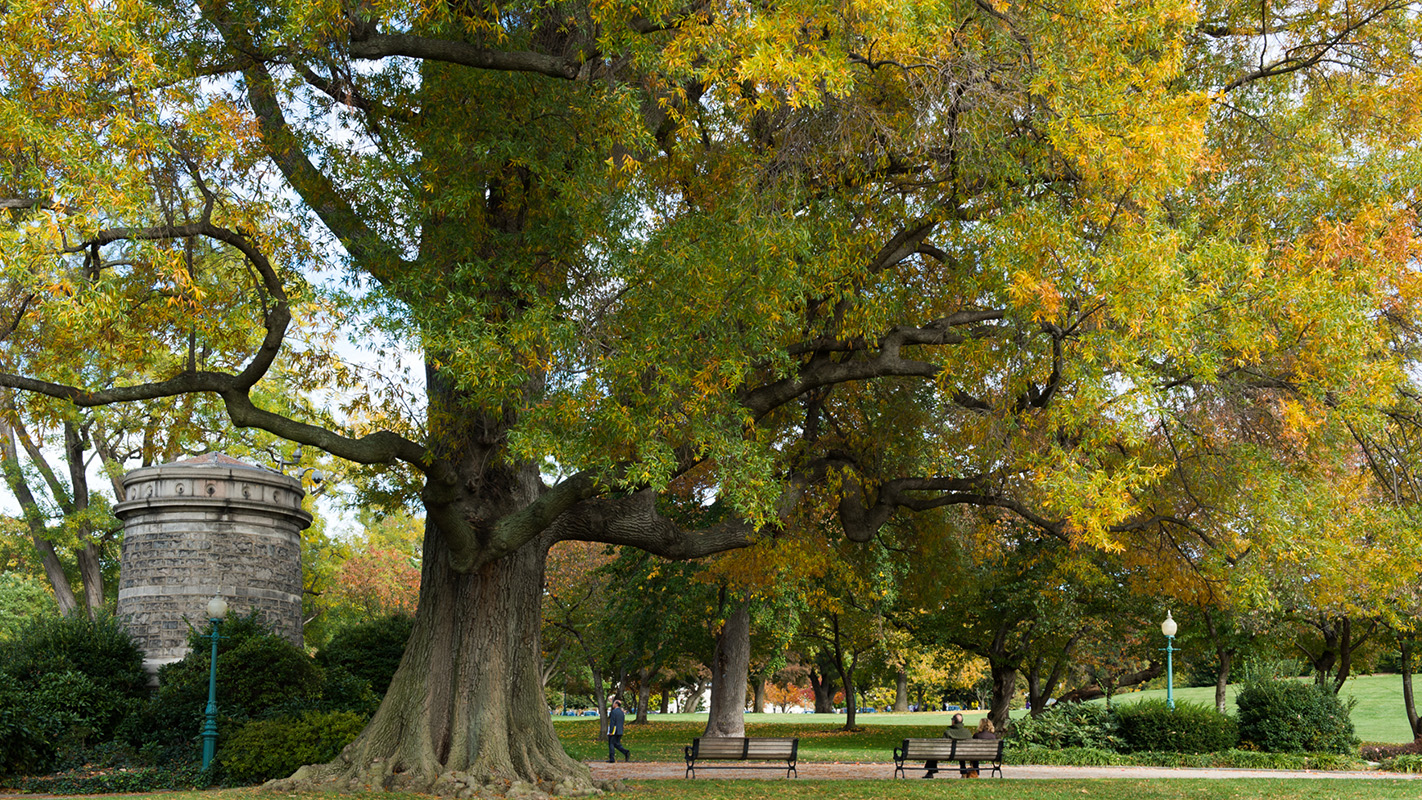Urban Warming Slows Tree Growth, Photosynthesis

For Immediate Release
New research from North Carolina State University finds that urban warming reduces growth and photosynthesis in city trees. The researchers found that insect pests are part of the problem, but that heat itself plays a more significant role.
“Earlier studies have shown that urban warming increases pest abundance in street trees,” says Emily Meineke, lead author of a paper describing the work. “We wanted to know how urban warming and pest abundance affect tree growth, since trees pull carbon out of the atmosphere and convert it into biomass. This is important, because we know that high levels of atmospheric carbon play a role in climate change.” Meineke did the work while a Ph.D. student at NC State. She is now a postdoctoral researcher at Harvard.
To explore this issue, researchers went to 20 pairs of willow oak trees (Quercus phellos) across Raleigh, North Carolina. At each site, one tree was treated with an oil that kills insect pests, and the second tree was left untreated. The sites were located across a variety of different urban temperatures, and air temperature was monitored at each site over the course of the experiment.
The researchers tracked the growth of all 40 trees for two years. Growth was assessed in two ways: by measuring the circumference of each tree’s trunk, and by measuring how much specific branches grew on each tree. The researchers also measured each tree’s photosynthesis, which is how trees capture carbon from the atmosphere and is a key marker of tree health.
The researchers found that scale insects and spider mites – well known tree pests – were more abundant at hotter sites. Specifically, they found that spider mite populations more than doubled when a site’s average temperature crossed a threshold of 16.4 degrees Celsius (61.5 degrees Fahrenheit). Scale insects, however, showed a linear relationship with temperature. In other words, the hotter it got, the more scale insects there were.
The researchers also found that warming negatively affected tree photosynthesis and growth, regardless of whether pests were present.
“Trees that didn’t have pests had more branch growth than trees with pests,” Meineke says. “But trees at warmer sites had less trunk growth, which accounts for more tree biomass, regardless of pests.”
The researchers then plugged these results into a model to determine the extent to which urban warming impacted carbon storage for all of the willow oaks in Raleigh.
“We found that urban warming reduced carbon storage by all of Raleigh’s willow oaks by 12 percent, or 27 metric tons per year,” Meineke says.
“We think the findings are generalizable to other tree species and other cities, especially hotter cities like Atlanta, but additional work needs to be done to determine whether that’s the case,” Meineke says.
The paper, “Urban warming reduces aboveground carbon storage,” is published in the journal Proceedings of the Royal Society B. The paper was co-authored by Elsa Youngsteadt, an entomology research associate at NC State; Rob Dunn, a professor of applied ecology at NC State; and Steve Frank, an associate professor of entomology and plant pathology at NC State. The work was supported by the Department of the Interior’s Southeast Climate Science Center, under cooperative agreement numbers G11AC20471, G13AC00405 and G15AP00153; by the U.S. Department of Agriculture’s National Institute of Food and Agriculture, under grant number 2013-02476; and by the National Science Foundation under grants 0953390 and 1136703.
-shipman-
Note to Editors: The study abstract follows.
“Urban warming reduces aboveground carbon storage”
Authors: Emily Meineke, Elsa Youngsteadt, Robert R. Dunn, and Steven D. Frank, North Carolina State University
Published: Oct. 5, Proceedings of the Royal Society B
DOI: 10.1098/rspb.2016.1574
Abstract: A substantial amount of global carbon is stored in mature trees. However, no experiments to date test how warming affects mature tree carbon storage. Using a unique, citywide, factorial experiment, we investigated how warming and insect herbivory affected physiological function and carbon sequestration (carbon stored per year) of mature trees. Urban warming increased herbivorous arthropod abundance on trees, but these herbivores had negligible effects on tree carbon sequestration. Instead, urban warming was associated with an estimated 12% loss of carbon sequestration, in part because photosynthesis was reduced at hotter sites. Ecosystem service assessments that do not consider urban conditions may overestimate urban tree carbon storage. Because urban and global warming are becoming more intense, our results suggest that urban trees will sequester even less carbon in the future.
- Categories:


